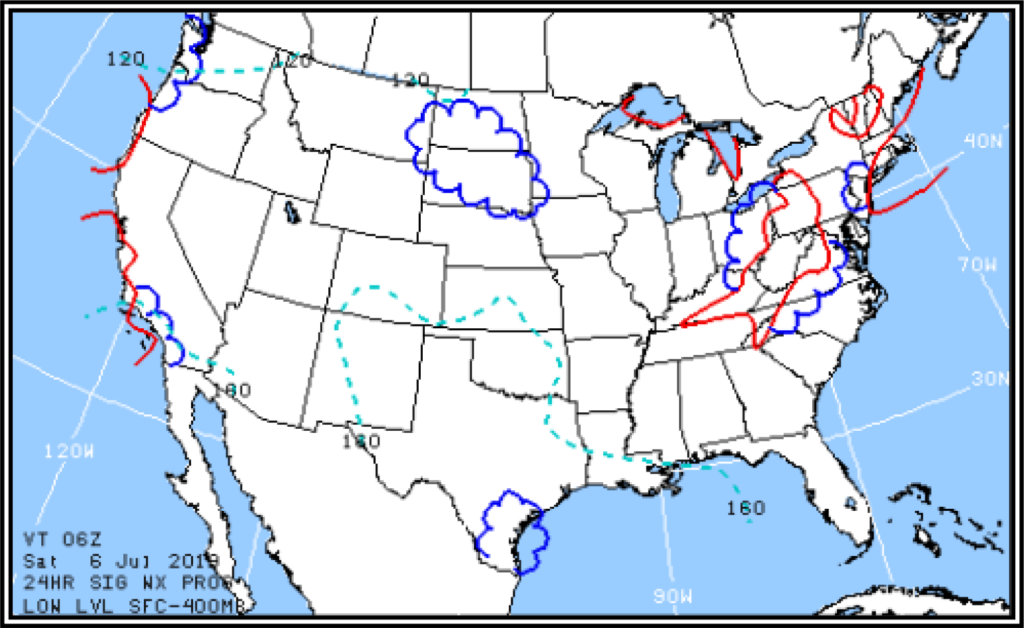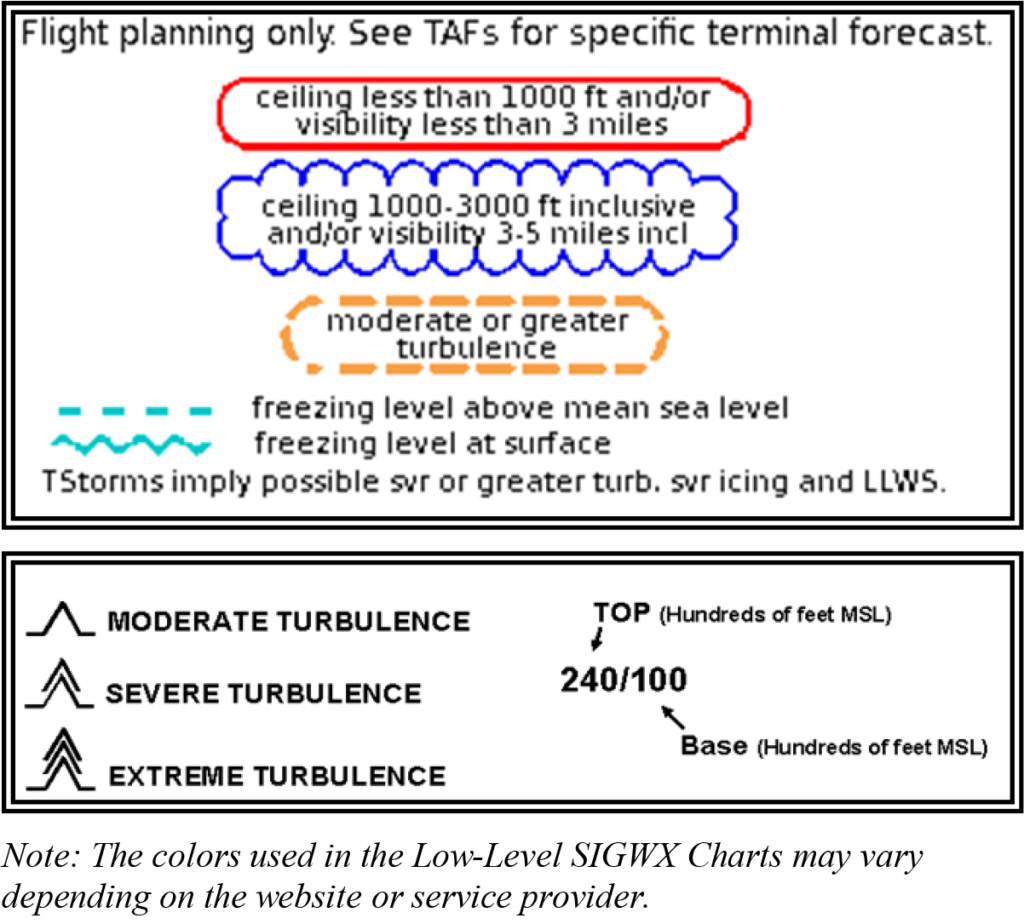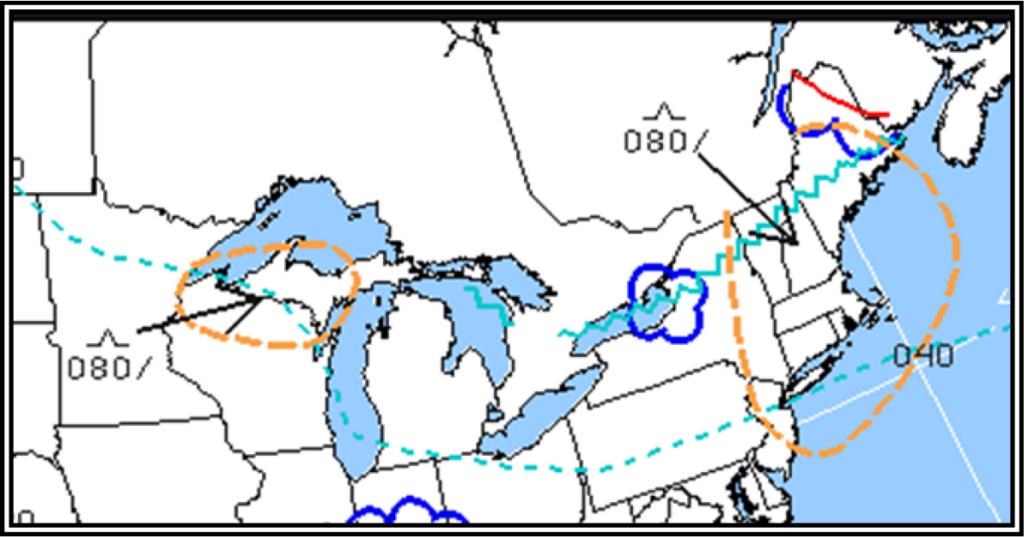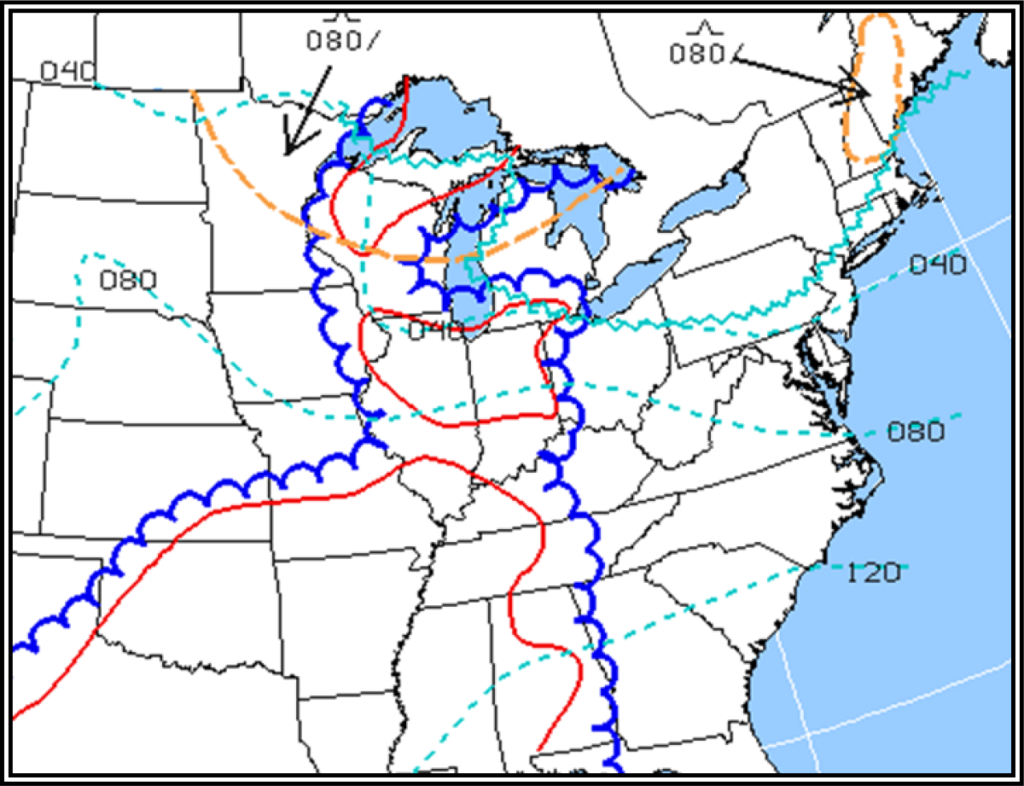Before a flight, pilots must do all they can to prepare for or avoid factors that are out of their control, such as weather. One of the many weather charts that are available are the significant weather (SIGWX) forecast charts. SIGWX charts offer meteorological data that can be vital when planning longer flights, or when weather conditions may come into play. If a plane may run into areas with visibility issues, a pilot must be prepared for instrument flying rules to be in play. Or, create a different flight plan to avoid weather obstacles. SIGWX charts are available in three types, low-level (up to FL240), mid-level (10,000 ft MSL to FL450), and high-level (FL250 to FL630). For now, let’s focus on low-level.
In 2022, the FAA combined several advisory circulars (AC) dealing with weather into the Aviation Weather Handbook (FAA-H-8083-28), an all-in-one weather resource for the industry. The AWH includes a section on how to read the SIGWX charts (Section 27.8), the portion on low-level SIGWX appears below.
Significant Weather (SIGWX)
SIGWX forecasts may be depicted in monochrome or color display. The colors used for symbols as well as the color and style of lines are not standard. The colors of jet streams, turbulence, cloud cover, and other elements may vary depending on the website and service provider. The examples shown in this section are from the NWS AWC’s and the AAWU’s websites. Refer to any legend, Help Page, or user information on the websites for details on the content and display of the weather information.
Low-Level Significant Weather (SIGWX) Charts
The Low-Level SIGWX Charts (see Figure 1) provide an overview of selected aviation weather hazards up to FL240 at 12 and 24 hours into the future.
The forecast domain covers the CONUS and the coastal waters. Each depicts a “snapshot” of weather expected at the specified valid time.

Issuance
Low-Level SIGWX Charts are issued four times per day by the NWS AWC (see Table 1). Two charts are issued: a 12-hour and a 24-hour prognostic (prog) chart.

Content
Low-Level SIGWX Charts depict weather flying categories, turbulence, and freezing levels (see Figure 2). In-flight icing is not depicted on the Low-Level SIGWX Chart.
Depending on the website or service provider, the Low-Level SIGWX Charts may be combined with Surface Prog Charts to create a four-panel presentation. For example, the left two panels represent the 12-hour forecast interval and the right two panels represent the 24-hour forecast interval. The upper two panels depict the SIGWX Charts and the lower two panels the Surface Prog.

Flying Categories
IFR areas are outlined with a solid red line, MVFR areas are outlined with a scalloped blue line, and VFR areas are not depicted (see Figure 3).

Turbulence
Areas of moderate or greater turbulence are enclosed by bold, dashed, brown lines (see Figure 4). Turbulence intensities are identified by standard symbols (see Figure 2). The vertical extent of turbulence layers is specified by top and base heights separated by a slant. The intensity symbols and height information may be located within or adjacent to the forecasted areas of turbulence. If located adjacent to an area, an arrow will point to the associated area. Turbulence height is depicted by two numbers separated by a solidus (/). For example, an area on the chart with turbulence indicated as 240/100 indicates that the turbulence can be expected from the top at FL240 to the base at 10,000 ft MSL. When the base height is omitted, the turbulence is forecast to reach the surface. For example, 080/ identifies a turbulence layer from the surface to 8,000 ft MSL. Turbulence associated with thunderstorms is not depicted on the chart.

Freezing Levels
The freezing level at the surface is depicted by a blue, saw-toothed symbol (see Figure 5). The surface freezing level separates above-freezing from below-freezing temperatures at the Earth’s surface.
Freezing levels above the surface are depicted by blue dashed lines labeled in hundreds of feet MSL beginning at 4,000 ft using 4,000-ft intervals (see Figure 5). If multiple freezing levels exist, these lines are drawn to the highest freezing level. For example, 80 identifies the 8,000-ft freezing level contour (see Figure 5). The lines are discontinued where they intersect the surface.
The freezing level for locations between lines is determined by interpolation. For example, the freezing level midway between the 4,000 and 8,000-ft lines is 6,000 ft.

Multiple freezing levels occur when the temperature is 0 ºC at more than one altitude aloft (see Figure 6). Multiple freezing levels can be forecasted on the Low-Level SIGWX Prog Charts in situations where the temperature is below freezing (negative) at the surface with multiple freezing levels aloft.

In Figure 6, areas with multiple freezing levels are located on the below-freezing side of the surface freezing level contour and bounded by the 4,000-ft freezing level. Multiple freezing levels are possible beyond the 4,000-ft freezing level (i.e., below 4,000 ft MSL), but the exact cutoff cannot be determined.
As helpful as these charts and forecasts can be, they can also take time and attention to understand. For examples of the mid- and high-level SIGWX forecast charts, check out the Aviation Weather Handbook available from ASA.






